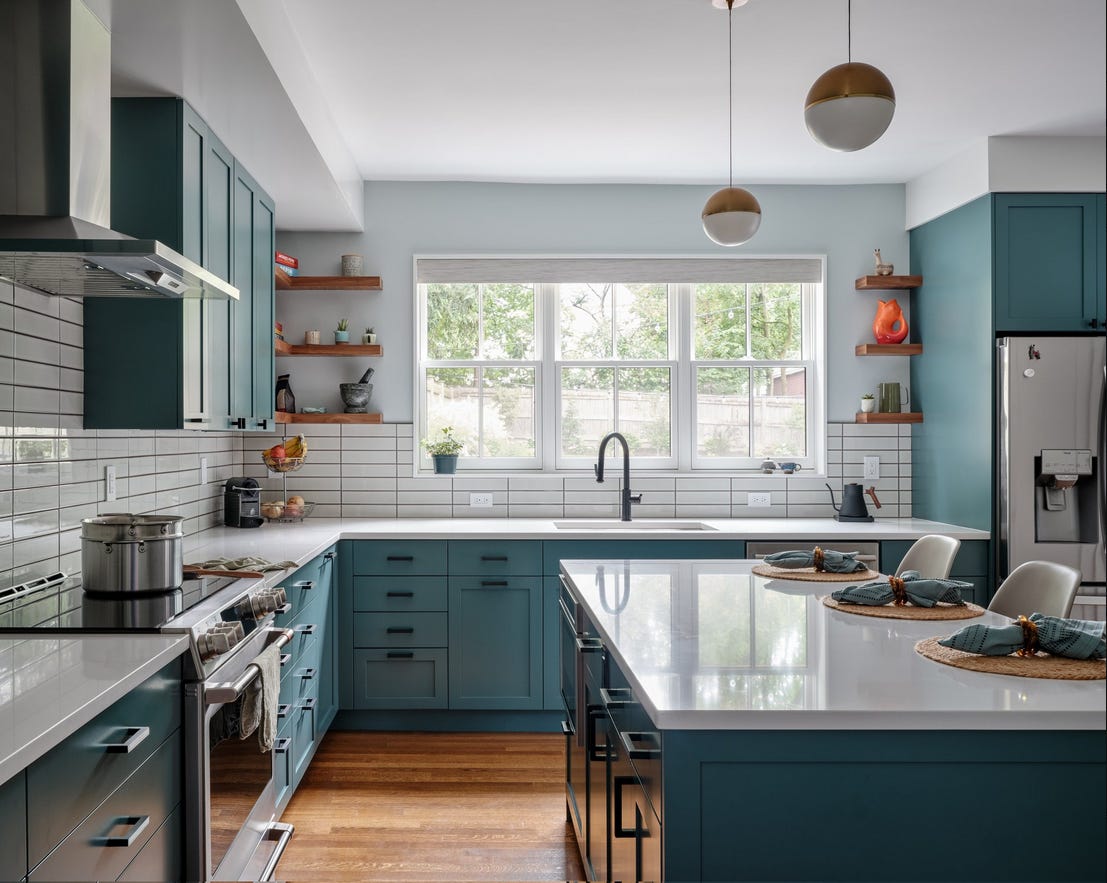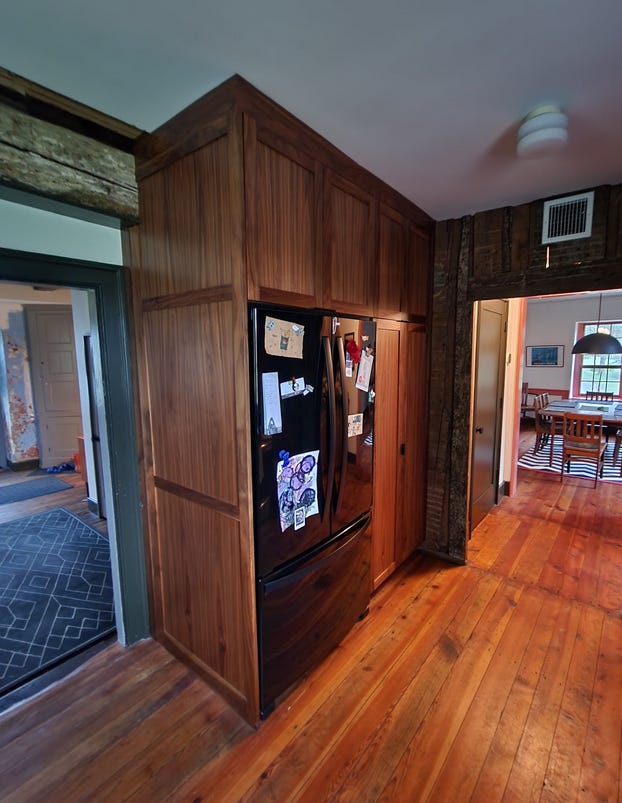First, a reminder: Friday posts are free, but consider supporting my work to get access to longer form Tuesday posts and the whole archive…over 60 articles! Here’s a note I got from a happy reader:
Thanks, and now let’s dive in!
We’ve all seen plenty of them - big, honkin’ fridges that stick out way past the counter and the surrounding cabinets, hulking monuments to lazy design and the lack of interest in even taking 20 seconds to think through a better solution.
The easiest way to solve this problem is to get a counter-depth fridge, which is meant to sit flush with normal 24” deep cabinets, but there are a couple of drawbacks:
Expense. Counter depth fridges are generally much more expensive than regular fridges.
It’s built-in. It’s a super cool look, but if it needs to be replaced, it’s harder to find something that will fit that exact space. They’re also sometimes harder to service.
Storage capacity. They just…aren’t that deep. You can’t store platters or other longer items, and especially for families, it’s just not enough storage. That’s why you often see counter-depth fridges that are much wider, or even two of them next to each other.
We do plenty of integrated/counter-depth fridges, because the look is definitely cool and it’s a premium product, but more often than not, our clients are looking for a more cost-effective solution that isn’t so bulky and ugly.
So…here are two of my favorite solutions:
Method 1
Pull the 24” cabinets out from the wall by 4-6”, and extend the counter back to the wall to cover the gap. Voila! deeper recess created for fridge, deeper counter (bonus!), and furred space to run electrical and plumbing (bonus!)


Method 2
Build a 30” deep pantry, put fridge next to it. Voila! Deeper pantry, and fridge looks integrated.

If you’re pursuing either method 1 or method 2, you’ll need to keep a few things in mind:
Door style. Make sure the interior storage bins on the doors, and the style of the doors themselves, allow this approach.
Hinge location/type. Not every hinge will allow full opening of the door within the footprint of the door itself - make sure you check for this. They’re sometimes called “European style” hinges.
Required clearances. Look *very carefully* at the information included with the fridge, to make sure the cabinetry and millwork you’re designing around the fridge allows for the proper clearances, when the fridge is both open and closed, and in order to slide it out again. Fridges often don’t actually need that much clearance, and when you dig into the actual requirements, you can make things quite tight and clean.
These methods don’t work with every fridge, so it’s very important that you take a close look and make sure you’re considering every issue!
All that said, it’s entirely possible to use one of these methods to avoid the dreaded situation in the first photo…so let’s work together to avoid unnecessary bulky fridge catastrophes!
Thank you for reading! If you’re enjoying the content, won’t you consider becoming a paid subscriber? For less than a cup of coffee, etc etc…!






Fantastic ideas. Thank you!
Love these! And absolutely agree with method #1! The hidden bonus is the extra depth on the countertop. I did this at my home and we love it.